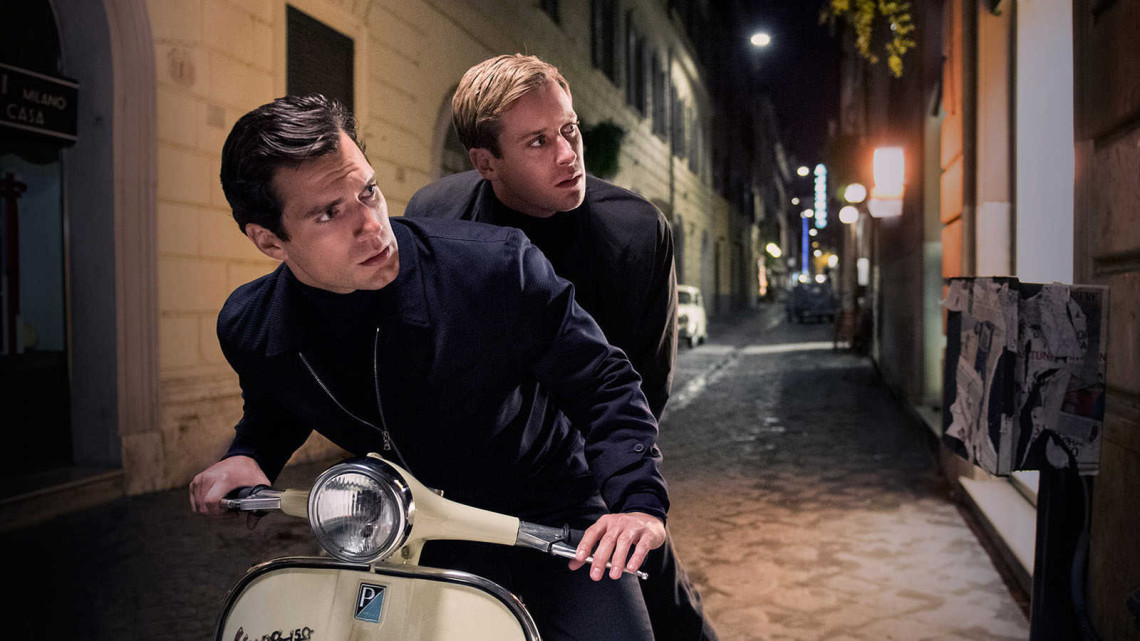Contrary to what so-called “scientists” might claim, the past is not a static thing. It’s changing all the time, and not just because Google’s new Alphabet rigamarole is a cover-up for the debut of commercially available time travel. The past exists only insofar as the people of the present document and perceive it, and so the significance of bygone eras becomes even more elastic as the years between then and now add up. As tastes shift, social attitudes change, and new information makes itself known, so too do the supposedly unchanging events of the past paradoxically change. The biggest, easiest example might be the estimation of American slavery in the imagination of 1900 (a simpler, more innocent and financially lucrative time) versus the imagination of 2000 (a systematic genocide marked by suffering, indignity, and cruelty).
The efficacy of film in accurately replicating lost historical milieus can vary wildly, but it is consistently dependable when it comes to reproducing the milieu of its own creation. Even when a film may be set decades earlier, it’s still suffused with the spirit of its own present; the early-‘40s antebellum south of Gone With The Wind bears little resemblance to the plantations of 12 Years A Slave, because audiences in the year 2013 knew better than to expect a glossy tale of love and passion starring the perpetrators of such abject horrors.
Guy Ritchie’s latest collection of action setpieces remakes the seminal ‘60s spy program The Man From U.N.C.L.E. for audiences in the modern era. But instead of modernizing the concept — maybe a wisecracking Navy SEAL teams up with a quiet, intense agent on loan from a Middle Eastern insurgency — the film chooses to modernize the past. Ritchie’s take on the original property emphasizes sheen and slickness at every turn and in doing so, he unmistakably outs it as a product of the 2010s.
Strictly speaking, very little happens in Ritchie’s U.N.C.L.E. Henry Cavill’s unflappable agent Napoleon Solo teams with Armie Hammer as Soviet asset Illya Kuryakin during the height of the Cold War years to topple a graver international threat (The Great Gatsby’s Elizabeth Debicki has access to a MacGuffin-class atomic weapon). Alicia Vikander joins them as the head bomb scientist’s daughter—providing a lead as to where the nuke might be headed —but isn’t allowed to do much else. They catch the baddie, obviously, and that’s really all there is to it. Ritchie rightfully expects the easy rapport between his male leads to provide him with the same box-office clout that launched his last buddy flick, 2009’s Sherlock Holmes, to box-office dominance.
U.N.C.L.E. is one hundred percent surface, and that high-gloss finish betrays the odd little temporal dissonance in the film. Sometimes, this vibe comes across through means as superficial as the film itself; Alicia Vikander’s signature wardrobe item is an oversized pair of white sunglasses, the exact accessory vaguely present in the ‘60s and held up as an icon of retro cool today. Another formal highlight of the film is its snappy, jazzy soundtrack, marrying anachronistic gems with Daniel Pemberton’s original score. Cuts such as Edwin Starr’s “Funky Music Sho’ Nuff Turns Me On” and Tom Zé’s “Jimmy, Renda-se” wouldn’t be released until 1971 and 1970, respectively, but because they still manage to capture that distinctly old-timey feel, in they go. Pemberton’s score, too, bridges this temporal gap. His liberal use of jazz flute is one of the film’s more memorable aspects, and arrives connoted with cultural meaning as well. Though jazz flute was certainly present in the genre (some compositions for flute date back as far as the ‘20s and ‘30s) it wouldn’t truly become popular until the later ‘60s and early ‘70s, and even then, it was still a regular object of mockery. May we all remember the words of the wise Christina Applegate in Anchorman: “Jazz flute is for little fairy boys.” To the modern listener, most likely unhip to the fraught politics of jazz flute, it’s another cool streak of old-fashioned pizzazz. In actuality, it’s a nostalgia trip into a past that the present has created
Beyond simple aesthetics, the general methods through which Ritchie doles out action reflect the present zeitgeist. As is de rigeur with Ritchie, he revels in pure kinetics, keeping his camera crammed in his actors’ faces as they smash one another through stall doors, sinks, onto the floor. In the ‘60s, Hollywood didn’t have the requisite technology for highly mobile, visceral camerawork as Ritchie displays here. In his most effective spectacle, Ritchie allows Cavill to hang back and enjoy lunch while Hammer dispatches their enemies — the tussle only seen through fleeting glimpses in a windshield’s reflection. It’s a background gag nested in the foreground, a clever trick that’s in vogue. (Think back to last summer, and Groot’s background disassembly of the prison’s center console in Guardians Of The Galaxy.)
None of these observations are intended as negative criticisms, mind you. (God help the content-aggregators who retitle this “What The Man From U.N.C.L.E. Gets Wrong About the ‘60s”.) It’s merely an observation of a curious phenomenon, an illuminating anti-verisimilitude that acts as a snapshot of the present day through our engagement with the past. The Man From U.N.C.L.E. is a historical film, but not for the swinging sixties. By virtue of having been made here, today, now, it is a historical film of the present day. No matter what groovy ‘tudes Ritchie may try to infuse his film with, he can’t change the fact that he’s a filmmaker using 2015’s technology to make a film for a 2015 audience. In subtle, barely conscious ways, that now permeates the film’s then. In this respect, regardless of when it may be set, every film is a historical film, acting as a time capsule for its own modernity.

















